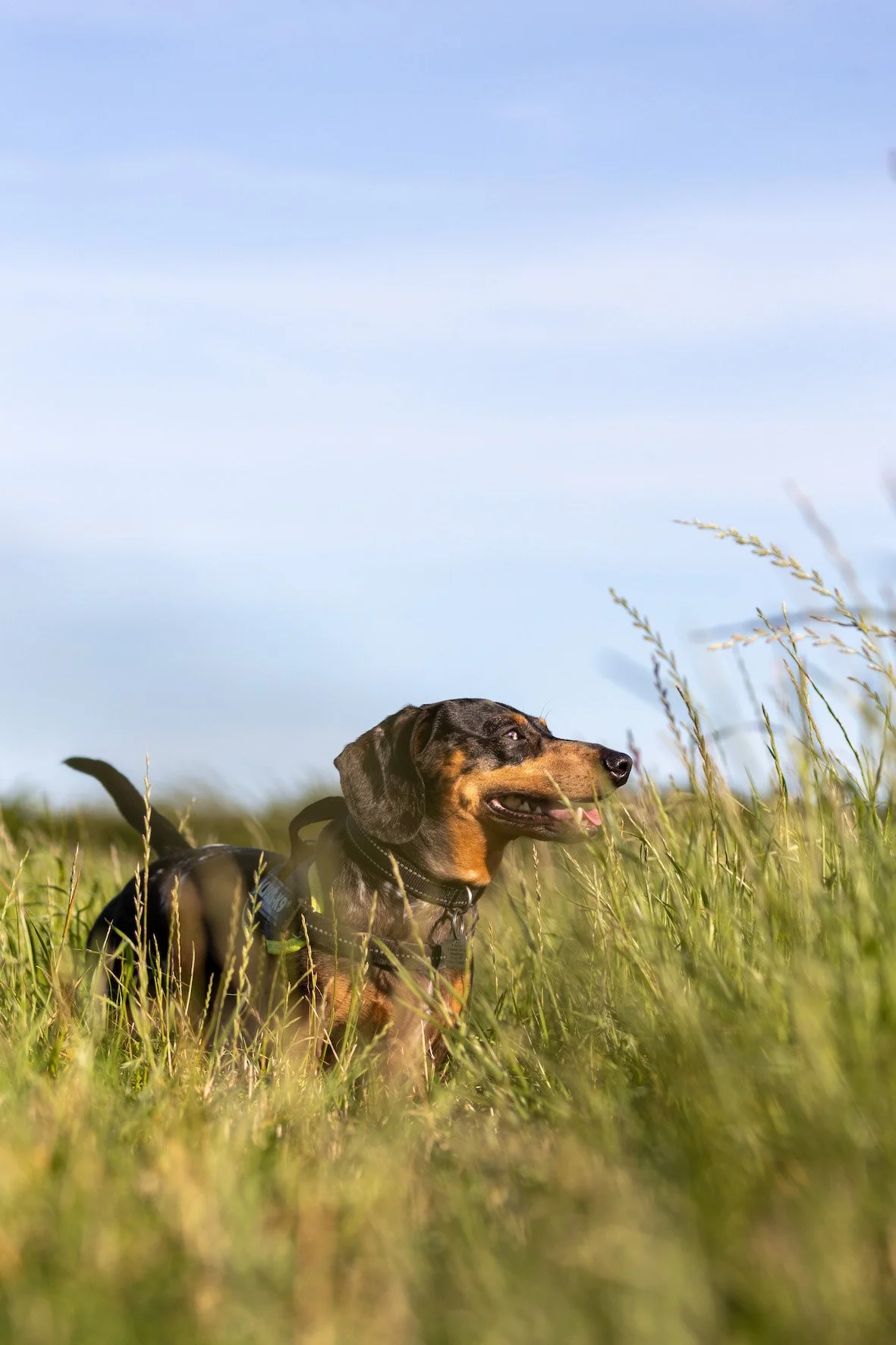How Much Exercise Does Your Dachshund Need?
Dachshunds are an active breed, and they do require regular exercise to maintain their overall health and well-being. We have discussed this in our blog on Seven Things I Wish I’d Known Before Owning a Dachshund but dachshunds are very energetic little dogs so perhaps need more exercise than you might expect!
When we first got our dachshund boy, the question of how much we needed to walk him as a puppy came up as soon as we were cleared to walk him post-vaccination, as there is a lot of conflicting information out there.
So, how much do I need to walk my dachshund?
The amount of walking a dachshund needs can vary based on factors such as age, health, and individual temperament. Generally, dachshunds are an active and energetic breed, but they also have unique considerations due to their long spine.
As puppies, dachshunds can have a lot of energy and are also full of curiosity as they explore their new world. Aiming for shorter, frequent walks can avoid overexertion, but also be useful for getting your puppy used to going to the toilet outside.
As a general rule, while they are puppies, the guideline is to walk them on lead for about 5 minutes per month of age, up to twice a day. This is because when they are still growing, and joints, bones and muscles are still developing, so walking needs to be limited until they are fully grown.
From a year old however, they can be walked for at least an hour, if not more as per their individual energy levels. Typically one to two moderate on lead walks of around 20-30 mins per day is enough for most, but (from experience) more energetic dachshunds can definitely walk for longer than that. Generally most adult dachshunds will benefit from between 30 mins to 1 hour of exercise per day. Splitting this across two (or more) short walks a day can be useful to keep your dachshund mentally stimulated and physically active.
As dachshunds age and reach their senior years, their activity levels may decrease. It’s important to adjust the duration and intensity of walks to accommodate any signs of arthritis or joint issues. Shorter, more frequent walks may be more suitable for senior dachshunds.
Some additional considerations for dachshund exercise
The importance of mental stimulation
Dachshunds are intelligent dogs, and ensuring that they have enough mental stimulation throughout the day is as crucial as physical exercise. This can be combined with physical exercise, for example by building in regular “sniff”walks, where scent trails are prioritised over time and distance walked. Dachshunds are hounds, and love to sniff on walks, so this can really add to their mental stimulation.
It’s also important to build in activities and play that helps to stimulate your dachshund throughout the day. This can include incorporating activities like puzzle toys, hide-and-seek games, or obedience training into their routine.
Be aware of potential health conditions
We have previously written a post about the risks of IVDD in dachshunds and this was certainly a significant consideration for us when we were researching the breed before our puppy came into our lives, so being mindful of the potential risks of spinal issues when exercising or playing with your dachshund are important. It is a good idea, for example, to avoid activities that strain their backs, such as jumping from heights.
It is also worth considering elements such as whether to walk your dachshund on a collar or a harness, and to ensure that whichever you choose, this is measured and fitted for your dog. If you are using a harness, it’s important that this properly supports your dachshund’s back. We have previously also written about choosing a harness for your dachshund as this is something that we found can be quite challenging due to the unique shape of the dachshund body.
Dachshund traits and individual temperament
In addition to health considerations, it’s worth considering the quirks of the dachshund breed and also the individual, unique traits of your own dachshund.
One thing to bear in mind is that some dachshunds can be sensitive to or reluctant to walk in bad weather, such as heavy rain, wind or snow, so you may want to adjust your routine in particularly bad weather. It’s also important to adjust your schedule and exercise routines when the weather is particularly hot, as we have previously discussed summer safety tips which includes limiting outdoor activities such as walks when it’s too hot for your dachshund.
Above all, while theory is good, the best thing to do is pay attention to your dachshund’s cues. If they seem tired or reluctant during a walk, adjust the duration or intensity accordingly.
It’s essential to strike a balance that keeps your dachshund physically active without putting undue stress on their spine, but that also gives them the mental stimulation and exercise they need to stay healthy. Regular veterinary check-ups can help monitor their overall health and guide adjustments to their exercise routine as they age. Always consult with your vet for personalised advice based on your dachshund’s specific needs and health status.








